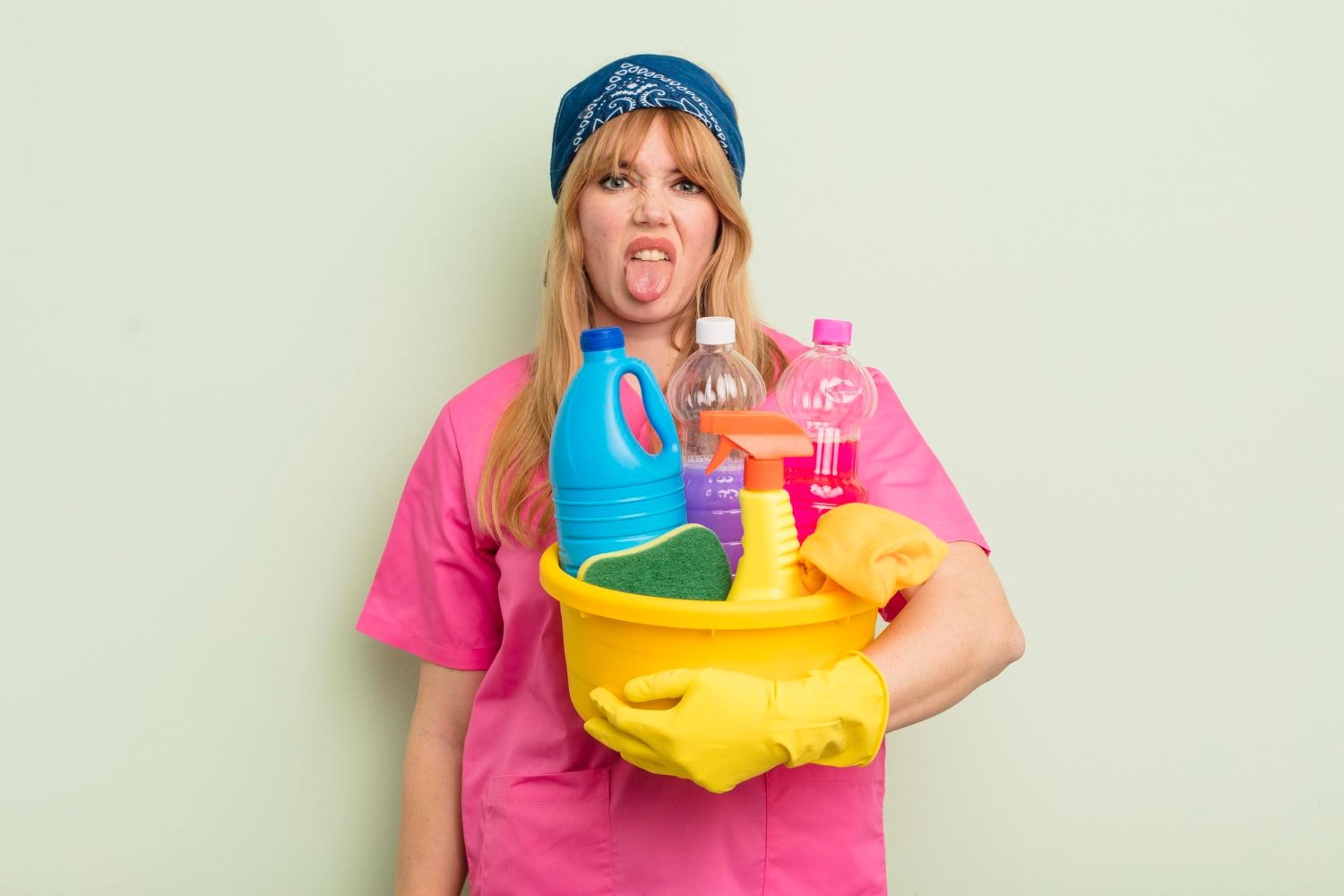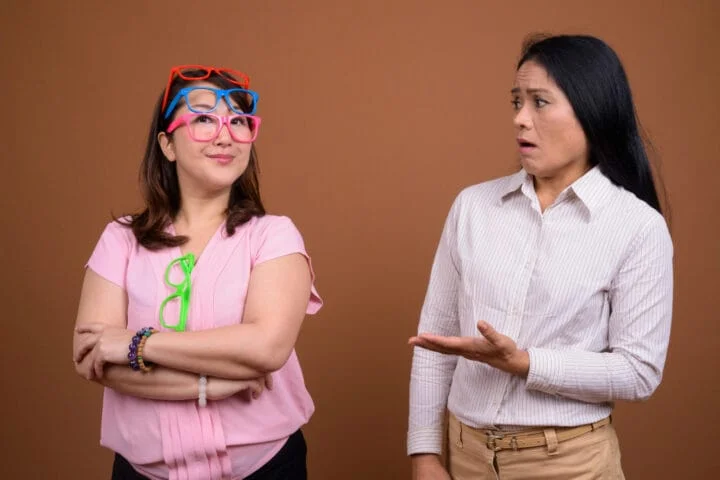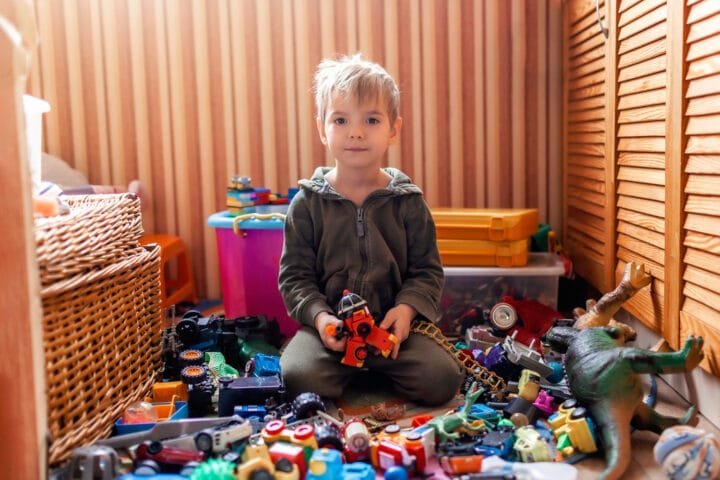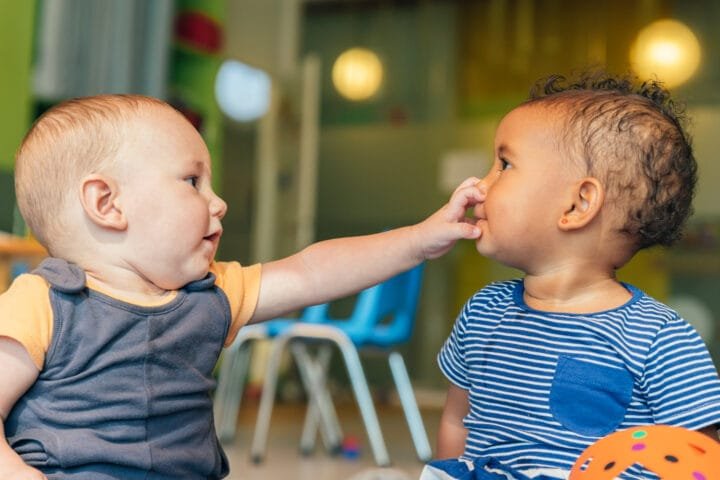Is Your Child Hiding Something? The Secret Language of Substance Abuse
The change was so gradual at first that I almost missed it. One minute, he was a sweet and goofy child who loved Lego castles. The next day, he was a sullen teen who slammed doors and disappeared with friends I didn’t recognize. In the end, the whispers began, the late nights, the slipping grades… and I realized my child might be taking drugs. Changes in behavior, academic decline, changes in social circles, and secretive behavior are some signs to watch out for.
As a parent, it was challenging to talk to your kids about drugs without scaring them or pushing them away. I’ve been there, wrestling with those agonizing questions. As a result, I am sharing my story and the lessons I learned along the way in order to help you navigate this challenging terrain and protect your children from substance abuse’s devastating effects.
Why We Need to Talk About Drugs: The Shocking Truth About Teen Substance Abuse
A frightening statistic about teen drug abuse is that, according to the National Institute on Drug Abuse, nearly 50% of high school seniors use illicit drugs at least once. And we’re not talking about just “high-grade drugs.” Prescription drug abuse is rampant, with almost one in ten teens admitting to misusing them.
Vaping, often perceived as harmless, has become a gateway to nicotine addiction for a whole younger generation, with over 2.5 million middle and high school students using e-cigarettes in 2022.
The earlier a child starts using drugs, the more likely they are to develop a substance use disorder later in life. Drugs change their brains while they’re still growing, making them incredibly vulnerable. The prefrontal cortex, responsible for decision-making and impulse control, matures in the mid-20s. As a result, teenagers are more likely to engage in risky behaviors, such as drug use, without fully thinking about the consequences.
We should not forget that they face intense peer pressure every day. They are constantly bombarded with messages telling them drugs are cool, fun, and a quick fix to their problems. This pressure is only amplified by social media, which offers curated images of ” flawless ” lives and endless opportunities for comparison.
We can give our children the knowledge and skills they need to make healthy choices if we start talking about drugs early and often. Rather than just saying no, we must build a foundation of trust, open communication, and healthy coping mechanisms. This will serve them well in the future. By taking this proactive approach, we can feel empowered in the fight against substance abuse.

Building a Foundation: Age-Appropriate Conversations About Drugs
Talking about drugs isn’t a one-size-fits-all conversation. What you tell a preschooler will be vastly different from what you discuss with a teenager. Here’s how to tailor your approach to each developmental stage:
Talking to Preschoolers (Ages 3-5):
- Focus on ” healthful choices.” At this time, simplicity is the key. Talk about the importance of eating healthy foods, getting enough sleep, and exercising. Explain that some things, like medicine, should only be taken with grown-ups’ help. Use the analogy of a car needing the right fuel to run properly, just like our bodies need healthy food to grow strong.
- Use everyday examples. Relate the concept of “too much” to things they understand, like eating too much candy or staying up too late. Explain that even positive things can be harmful if we have too much. For instance, too much water can make us sick, just like too many medicines can be dangerous.
- Teach them about body safety. Empower your children to say “no” to unwanted touches and tell a trusted adult if someone makes them feel uncomfortable. This sets the stage for them to assert their boundaries later with drugs. Explain that their body is their own, and they have the right to say “no” to anything that makes them feel uncomfortable.
Talking to Elementary School Children (Ages 6-10):
- Expand on healthy choices. Now, you can introduce the concept of drugs and how they harm the body. Please explain the difference between medicine, which helps us get better, and drugs, which can make us sick or change our thinking and feelings. Use simple diagrams to illustrate how drugs affect different parts of the body, like the brain and the heart.
- Address media influences. Talk about how drugs are often portrayed in movies and TV shows and help them develop a critical eye for these messages. Discuss how advertising can be misleading and how some companies try to make unhealthy things look cool.
- Discuss peer pressure. Role-play different scenarios where they might be offered drugs and practice saying “no” confidently. Help them develop a “buddy system” where they can rely on a friend for support in challenging situations.
Talking to Preteens and Teenagers (Ages 11+):
- Have open and honest conversations. Talk openly and honestly. Don’t avoid tough topics, such as addiction, overdose, and long-term health problems related to drug use. Emphasize the potential consequences of drug addiction by sharing the personal stories of people affected by it.
- Address the underlying issues. Discuss the problems that lead to drug use, including stress, anxiety, depression, and low self-esteem. Help them identify coping methods that can help them cope, such as exercise, mindfulness, or talking to someone they trust.
- Provide accurate information. Give them accurate information. Tell them the facts about specific drugs and their effects. Avoid scare tactics, but be honest. Provide complete and up-to-date information from reliable sources like the National Institute on Drug Abuse (NIDA).
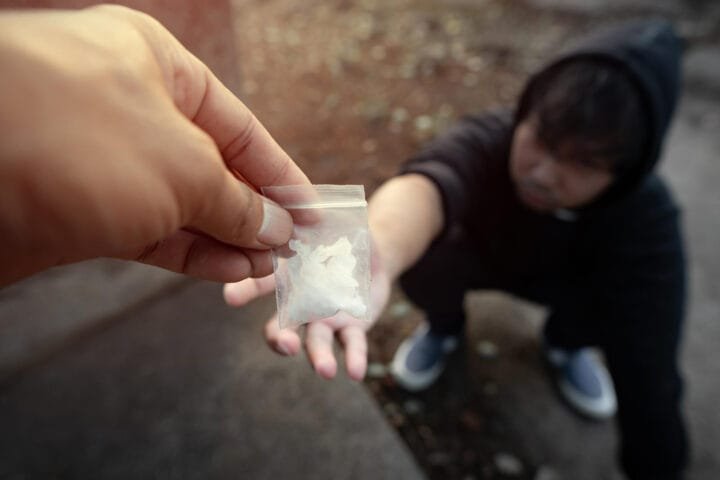
Effective Communication: Moving Beyond “Just Say No”
Simply telling our kids to “just say no” to drugs isn’t enough. We need to equip them with skills and strategies to navigate real-world pressures.
- Create a safe space. Let your children know they can come to you with any questions or concerns without fear of judgment. Listen actively and avoid interrupting or lecturing. Validate their feelings and let them know you’re there for them, no matter what.
- Practice refusal skills. Role-play different scenarios where they might be offered drugs and help them develop confident and assertive ways to say “no.” Please encourage them to come up with natural responses that feel comfortable for them. For example, they could say, “No thanks, I’m not into that,” or “I’ve got to leave; my parents expect me.”
- Teach them coping mechanisms. Help your children develop healthy ways to deal with stress, anxiety, and difficult emotions. This could include exercise, mindfulness, creative outlets, or spending time in nature. Please encourage them to find activities that help them relax and recharge.
- Build self-esteem. Please encourage your children’s passions and help them develop a strong sense of self-worth. Children with high self-esteem are less likely to turn to drugs to fit in or escape their problems. Celebrate their achievements, big and small, and help them recognize their unique talents and abilities.
Setting a Positive Example: Actions Speak Louder Than Words
Our children watch us, learning from our behaviors and choices. We need to be mindful of the messages we’re sending, both directly and indirectly.
- Be mindful of your substance use. If you drink alcohol, do so in moderation. Avoid using drugs in front of your children, even prescription medications. Explain to your children that adults also need to make responsible substance use choices.
- Model healthy coping mechanisms. Show your children how you deal with stress and difficult emotions healthily. This could include exercise, relaxation techniques, or talking to a friend or therapist. Let them know that it’s okay to ask for help.
- Promote a balanced lifestyle. Please encourage your children to participate in activities they enjoy and that promote their physical and mental well-being. This could include sports, music, art, or volunteering. Help them find activities that foster their passions and connect them with others.
Seeking Support: You Don’t Have to Do This Alone
Navigating the world of drug prevention can feel overwhelming, but you don’t have to do it alone. There are many resources available to help you and your family.
- Know the signs. Familiarize yourself with the common signs of substance abuse in teenagers, such as changes in behavior, mood swings, withdrawal from family and friends, and declining academic performance. Pay attention to any sudden or drastic changes in your child’s behavior or appearance.
- Seek professional help. If you suspect your child is using drugs, seek professional help. A therapist or counselor can provide support and guidance for both you and your child. They can help you understand the underlying causes of your child’s drug use and develop a plan for intervention and recovery.
- Utilize community resources. Many communities offer drug prevention programs and support groups for parents and teens. Your child’s school may also have resources available.
- Connect with other parents. Learn from other parents’ successes and challenges by joining a local parent support group or connecting online. A parent support group can give you invaluable insights and support.
- Explore online resources. A variety of websites and online forums provide information and support for families dealing with substance abuse. SAMHSA offers a national helpline (1-800-662-HELP) and many online resources for families dealing with substance abuse.
Remember: You are your child’s first line of defence against drug abuse. By starting the conversation early, communicating openly and honestly, and setting a positive example, you can empower your children to make healthy choices and avoid drug dangers.
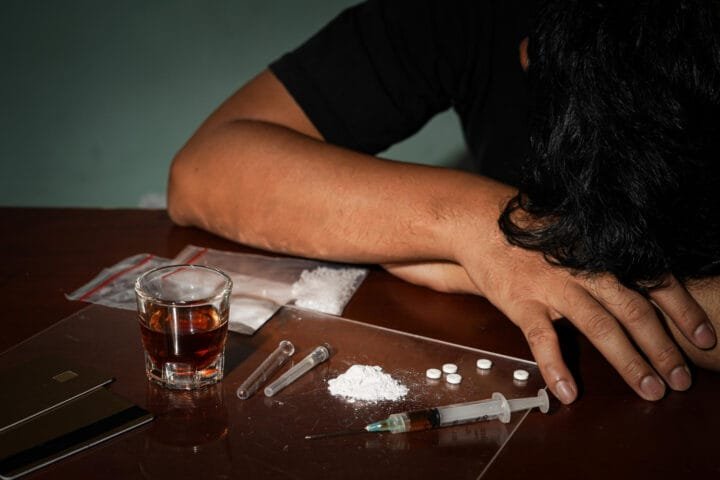
A Deep Dive: Understanding the Adolescent Brain and Substance Abuse
Teenagers’ developing brains undergo significant changes in structure and function, making them particularly vulnerable to drugs. To fully grasp drug prevention urgency, we must understand how drugs affect the developing adolescent brain.
While adolescence occurs, the prefrontal cortex of the brain matures, controlling impulses, judgment, and decision-making. As a result, teenagers are more likely to engage in risky behaviors, including drug experimentation, without fully considering the consequences.
When drugs flood the brain with dopamine, a neurotransmitter associated with pleasure, they interfere with the brain’s reward system. This creates a powerful sense of euphoria that can lead to addiction if used repeatedly. Adolescents are particularly susceptible to reward-seeking behavior, making them more likely to become addicted than adults.
As a result, early drug use can disrupt the brain’s normal development, increasing the risk of mental health problems, cognitive impairment, and addiction later in life. In comparison to teens who begin using drugs later in life, teens who use drugs before 18 have a significantly increased risk of developing a substance use disorder.
This is why early intervention is so crucial. The more we educate our children about drug dangers and give them the skills to resist peer pressure and make healthy choices, the better chance they have of protecting their developing brains and putting themselves on a path to a happy, healthy life.
Beyond the Home: The Role of Schools in Drug Prevention
Schools play a vital role in drug prevention efforts. They provide a structured environment where students can learn about drug dangers, develop healthy coping mechanisms, and receive support if they are struggling with substance abuse.
Effective school-based drug prevention programs address multiple factors that contribute to drug use, including:
- Providing accurate information about drugs and their effects: Students need to understand the science behind drug addiction and the potential consequences of drug use.
- Teaching refusal skills: Students need to learn how to say “no” to drugs confidently and assertively.
- Promoting positive social and emotional learning: Students need to develop healthy coping mechanisms and social skills to navigate peer pressure and make healthy choices.
- Creating a positive school climate: A supportive and inclusive school environment can reduce drug use risk factors.
- Providing access to mental health and substance abuse treatment: Schools can play a critical role in identifying and supporting students struggling with substance abuse or mental health challenges.
By implementing evidence-based prevention programs and creating a supportive school environment, we can empower students to make healthy choices and avoid drug dangers.
The Power of Community: Working Together to Prevent Drug Abuse
Drug prevention is not just parents’ and schools’ responsibility. It requires a collaborative effort from the community.
The following programs can provide valuable resources and support for families and individuals struggling with substance abuse:
- Parent education workshops: Workshops aimed at educating parents on how to prevent drug abuse.
- Youth mentoring programs: Young people can receive guidance and support from positive role models through mentoring programs.
- After-school programs: After-school programs provide young people with structured activities that reduce their risk of risky behavior.
- Community awareness campaigns: Community awareness campaigns aim to raise public awareness about drug dangers and to promote healthy alternatives.
By working together, we can create a community that supports healthy choices and prevents drug abuse.
Recommended Reading for Navigating Substance Abuse
Understanding substance abuse and its impact on families requires knowledge and empathy. These books offer diverse perspectives, valuable insights, and practical guidance for parents and caregivers:
- Age of Opportunity: Lessons from the New Science of Adolescence by Laurence Steinberg
Dr. Steinberg, a leading expert in adolescent psychology, delves into the fascinating world of the teenage brain. He explains why adolescence is a period of both immense vulnerability and incredible opportunity. This book provides a roadmap for parents to navigate the challenges of raising teenagers, including the risk of substance abuse, by understanding the science behind their behavior.
This poignant memoir chronicles a father’s heartbreaking journey as he witnesses his son’s descent into meth addiction. David Sheff’s raw and honest account offers a powerful testament to the devastating impact of substance abuse on families and the enduring power of love and hope.
In this follow-up to “Beautiful Boy,” David Sheff shifts his focus from personal experience to a broader exploration of addiction. He delves into the science of addiction, examines the failures of the current treatment system, and offers a hopeful vision for a more effective and compassionate approach to recovery.
Jessica Lahey, an educator and author, provides a practical guide for parents who want to protect their children from the dangers of addiction. She outlines strategies to build resilience, foster healthy coping mechanisms, and strengthen children’s resistance to peer pressure and the allure of drugs.
- Don’t Let Your Kids Kill You: A Guide for Parents of Drug and Alcohol Addicted Children by Charles Rubin
Dr. Rubin, a renowned addiction specialist, offers a lifeline to parents struggling with a child’s substance abuse. This book provides practical advice, coping strategies, and guidance on setting boundaries, seeking professional help, and navigating the difficult path of recovery.
A Message of Hope and Empowerment
Drug abuse is a constant battle, but we can win it if we work together as a community. Our young people can avoid drug addiction by making healthy choices, communicating with them openly, and working together as a community.
Don’t forget that prevention isn’t just about not using drugs. It’s about maintaining a healthy lifestyle, having positive relationships, and feeling confident. Our children must be provided with the knowledge, skills, and support they need.
Together, let’s ensure that every child reaches their full potential without substance abuse.
FAQs
It’s important to remember that early signs can be subtle and sometimes mimic typical teenage behaviour. However, here are some red flags to watch for:
Changes in the peer group: A sudden shift in friends or a growing secrecy about their social activities.
Declining academic performance: Dropping grades, lack of interest in schoolwork, or increased absenteeism.
Withdrawal from family activities: Spending less time with family and showing disinterest in things they used to enjoy.
Mood swings and irritability: Increased emotional volatility, frequent outbursts, or unexplained sadness.
Changes in sleep patterns: Sleeping more than usual or having trouble sleeping.
Physical signs: Bloodshot eyes, dilated pupils, changes in appetite, or unexplained weight loss.
Creating a safe and open space for communication is key. Here are some tips:
Choose the right time and place: Initiate the conversation when you’re both relaxed and have ample time to talk.
Start with open-ended questions: Instead of accusing or lecturing, ask questions like, “What do you know about drugs?” or “What do your friends think about drugs?”
Listen actively: Truly listen to their responses without interrupting or judging. Show empathy and validate their feelings.
Focus on the facts: Provide accurate information about the dangers of drugs without resorting to scare tactics.
Reinforce your love and support: Let your child know that you’re there for them, no matter what.
Peer pressure is a powerful force, but you can equip your child with the tools to resist it:
Strengthen their refusal skills: Role-play different scenarios and help them practice saying “no” confidently and assertively.
Encourage healthy friendships: Support their connections with friends who make positive choices.
Build their self-esteem: Help them develop a strong sense of self-worth so they are less likely to give in to peer pressure.
Stay involved in their lives: Know where they are and who they are with. Set clear boundaries and expectations.
Keep the lines of communication open: Encourage them to talk to you about their friendships and any challenges they are facing.
There are many excellent resources available to support parents:
The Substance Abuse and Mental Health Services Administration (SAMHSA) Offers a national helpline (1-800-662-HELP), treatment referral services, and online resources.
The National Institute on Drug Abuse (NIDA) Provides research-based information on drug abuse and addiction, as well as resources for parents and educators.
The Partnership to End Addiction: Offers support, guidance, and resources for families impacted by addiction.
Local community organizations: Many communities have organizations that provide drug prevention programs, support groups, and treatment services.
While some overlap exists, here are some key distinctions:
Frequency and intensity: Substance abuse often involves a pattern of concerning behaviours that increase in frequency and severity over time.
Impact on daily life: Substance abuse significantly impacts schoolwork, relationships, and overall well-being.
Secrecy and dishonesty: Teens abusing substances often become secretive and defensive and may engage in lying or stealing.
Physical and mental health changes: Substance abuse can lead to noticeable changes in physical appearance, sleep patterns, and mental health.
Related Posts
